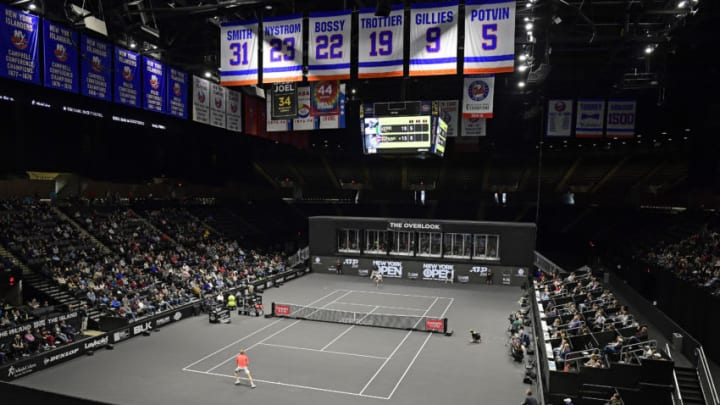The pandemic is hurting economies and businesses across the globe, and ATP 250 tournaments like the New York Open are not immune to its financial pressures.
Followers of the tour will be hard-pressed to see larger tournaments going defunct or shifting location, from the majors to even ATP 500s. However, ATP 250 tournaments often struggle to find the right mix of identity, popularity, and revenue to perpetually succeed as stops on the tour.
Nevertheless, there are more than a few successful and financially viable low-level tournaments, from Qatar to Stockholm to Houston, that consistently draw in solid crowds and higher-ranked players. The New York Open, played in the recently renovated Nassau Veterans Memorial Stadium in Uniondale, NY, does not fit these criteria.
This past June, due to economic hardship caused by Covid-19, Onexim Sports and Entertainment, owned by Russian billionaire Mikhail Prokhorov, is closing the site indefinitely until it can acquire new investors to take over all operations, according to Bloomberg Report.
Prior to the global pandemic, which has taken no prisoners in shutting down sports and economies alike, the New York Open had already been fighting an uphill battle. Technically a continuation of the Memphis Open, the New York Open had to replace a 40-year run of tennis in Tennessee that built up a consistent fanbase, if not consistent sponsorship.
In 2015, the investment group GF Capital bought the rights and eventually decided to move the tournament to the nearly 15,000 seat stadium in New York for the 2018 Tour.
Unfortunately, even with large-scale financial backing, the old adage remains: money cannot buy you love. The New York Open has struggled over the past three years with large issues that money is not likely to change, especially as money may now also be an issue. The tournament has attempted to connect itself with the power of New York City, yet it lies a traffic-filled hour east of Manhattan in the suburbs of Long Island.
Unknown to many self-proclaimed tennis fans, the name “New York Open” is often confused with the popular US Open, leaving many questioning why the area now has a second yet smaller tournament. Starting just days after the Super Bowl, the largest sporting event in America, and having to compete with the NBA, NHL, and NCAA basketball all in the greater NYC area, the New York Open is low on the sports totem pole, whereas in Memphis it was the premier event.
Issues of branding and competition have resulted in a lack of much-needed attendance, both from tennis fans and higher ranked tennis players, who can bring much financial success to smaller tournaments. The inaugural tournament in 2018 saw Kei Nishikori, a regular winner in Memphis, suit up, as well as 2017 US Open runner-up Kevin Anderson, who would go on to win the title.
Even still, crowds throughout the week remained small, and the stadium is split in half with matches on each side further split the crowds while creating an atmosphere of confusion and disruption. The black court, reminiscent of the popular Laver Cup, was received well by both fans and players, but that has done little to further the tournament’s name.
The last two years have seen mostly young, low-ranked Americans partake, with the only notable names being Milos Raonic once and John Isner twice. Each player has his fans and has had success, but neither are names that pack the seats or excite even the most hardcore fans.
The New York Open is not alone in its struggles as a tournament. Though most financial information is kept private, a look back over the ATP Tour’s history shows many failures and relocations of ATP 250 tournaments, such as the Ecuador Open that opened in 2015 and closed in 2018. However, the New York Open is notable for being one of the first on the ATP Tour to doubt its future due to the financial impact of Covid-19.
The decision taken by Prokhorov and Onexim, in the wake of the pandemic now leaves the New York Open in a state of flux. It currently awaits a new set of investors to come in and save the stadium and, by extension, the tournaments spot in Uniondale. If that fails, for the second time in five years, its owners, currently GF Capital, will be forced to either sell the tournament itself or relocate to possible greener pastures.
Such is the ever-changing and difficult life of an ATP 250 tournament.
